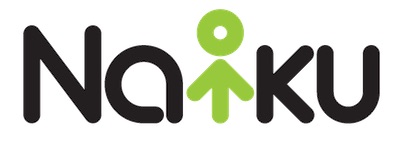In the era of 1:1, assessment is the often overlooked stepchild
Growth of 1:1
The renewed wave of interest and implementation of 1:1 projects in schools recently has been obvious – all over schools are evaluating iPads and other tablets, netbooks, and, given the continued price point decline, laptops. BYOD, once a quickly dismissed subject in the K12 community not that many years ago, is a deservedly hot topic of interest among educators. With the growing proliferation of smartphones – and tablets – among teens today BYOD is an acceptable strategy for many schools. Schools are in process of implementing a 1:1 initiative with one of these technologies, or moving to a blended model with multiple devices that are shared or spread across grades according to best fit. In all cases these initiatives decrease the student-to-computing device ratio, approaching 1:1.
An April 4, 2012 Piper Jaffray report stated that 78% of school IT managers are testing iPads, along with Google’s Chromebooks, while another 6% were testing Android tablets. From their survey of 5600 teens and 18 public school IT managers:
iPhone ownership among teens is now 34 percent, up from 23 percent in the fall and 17 percent last spring.
By fall 2012, the firm expects teen iPhone ownership could be at 40 to 45 percent.
iPad ownership is likely to approach 30 percent by the fall, compared with 24 percent currently.
All school IT managers expected within five to 10 years their school to have a one-on-one device-to-student ratio.
“The majority of IT managers believed that bring-your-own-device policies would be the major driver in achieving a one-to-one ratio,” according to the report.
1:1 Benefits
The benefits of the accelerated interest in 1:1 and associated increased student access to technology are numerous. The ability for students to consume content – individually – is powerful. Online textbooks, educational multimedia, interactive software, collaborative learning portals, and online learning are just a few examples of how increase device access can aid student learning.
However, many institutions implementing 1:1 today have overlooked an additional benefit – the capability of implementing balanced assessment. The focus of the initiatives has been on providing software and media that students consume – the ‘sexier’ use case – rather than using the devices as a generator of student performance data.
Balanced Assessment
Assessment as a whole remains a strong requirement. This is particularly true for students to demonstrate knowledge through summative assessment, and for schools and districts to show adequate performance with this data. On the other end of the assessment spectrum, formative assessment has long been proven through research to accelerate student learning. In 1998, Black and Wiliam reported that typical effect sizes found in formative assessment experiments were between 0.4 and 0.7. These are large effect sizes, and are much bigger than most of those found for educational interventions.
In their 1998 article, “Inside the Black Box: Raising Standards Through Classroom Assessment”, Paul Black and Dylan Wiliam state that firm evidence shows that formative assessment is an essential component of classroom work and that its development can raise standards of achievement. In addition, they stated that they know of no other way of raising standards for which such a strong prima facie case can be made.
Black and Wiliam’s review paper sparked renewed interest in formative assessment, both in research and in practice. Unfortunately though, assessment today is still largely unbalanced towards summative only, as teachers often find it too difficult and time consuming to deliver, score, and analyze assessments with traditional paper, pencil, and/or bubble cards.
Opportunity
There is a clear opportunity for the growth of student computing devices to create a balanced assessment. Assessment solutions that have built-in teacher collaboration tools, automated scoring, and standards aligned performance reporting make it easy for teachers to use formative assessment to quickly identify student knowledge to inform and differentiate instruction. In addition, student data gathered through common assessments – anything from formative textbook section quizzes through to grade level benchmark exams – can feed data-starved initiatives such as PLCs and teacher effectiveness programs.
While some districts and schools are taking advantage of this opportunity, for many others it is lower on the priority list – the oft forgotten ‘stepchild’ of the 1:1 or BYOD initiative. In these districts some individual teachers, in their excitement about eliminating pencil, paper, and bubble cards, are implementing free tools on their own. Unfortunately, while some of these tools do provide automatic scoring of some question types, they do not provide a method to share or collaborate in item and assessment development, nor to share and collaborate with students results for common assessments. Further, these free tools lack performance measures and reporting features – they do not provide for alignment to state standards and student progress measurements – thus missing by far the biggest opportunities for gains in teacher productivity and student achievement.
How You Can Take Action
We invite you to learn more about how you can maximize the use of your 1:1 or BYOD initiative with balanced assessment, or learn how other districts are using Naiku, by contacting us to arrange for a WebEx. Please contact us at sales@naiku.net or 612-35-NAIKU to schedule your webinar today.

